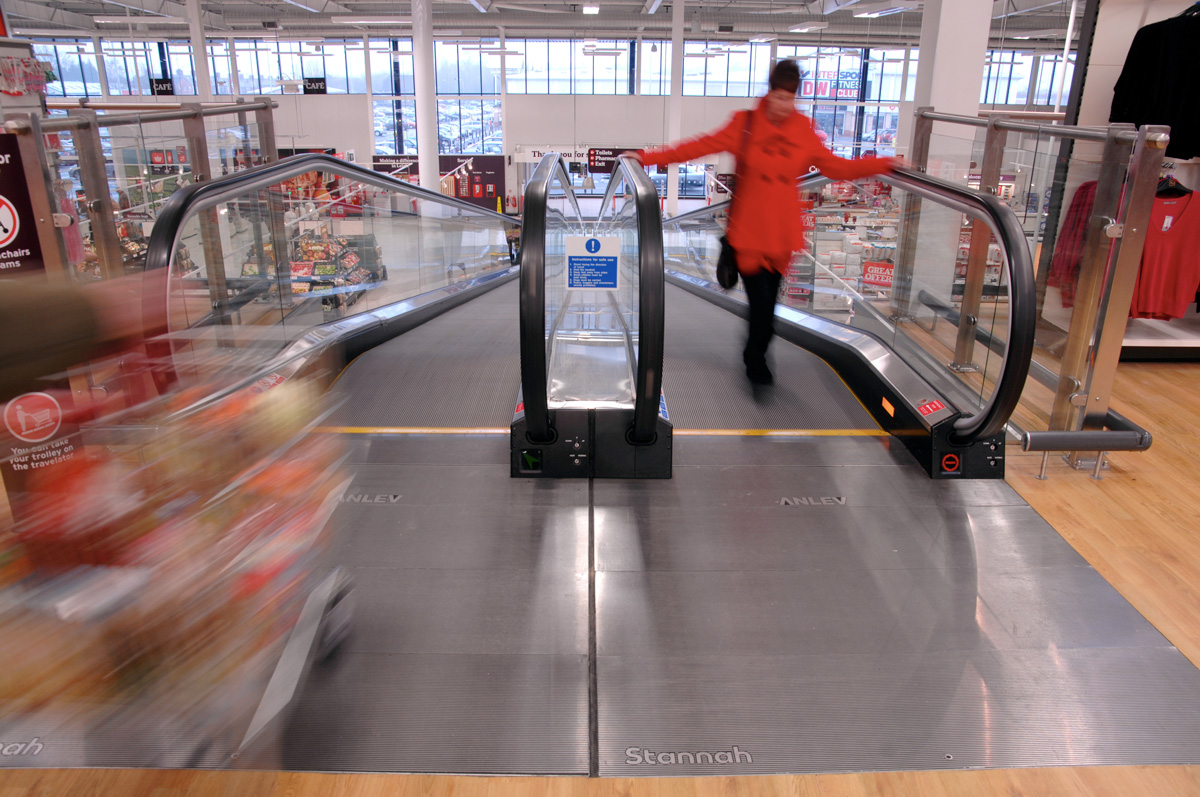Moving Walkway
The Travelator
A moving electric sidewalk, also known as a moving walkway or travelator, is a transportation device that assists people in moving horizontally across a distance.
1. Operation: Moving electric sidewalks consist of a series of linked metal plates or conveyor belts that move in a continuous loop. They are powered by electric motors and controlled by a central computer system. 2. Speed: The speed of a moving electric sidewalk can vary, but it typically ranges from 0.5 to 1.5 meters per second (1.6 to 4.9 feet per second). The speed can be adjusted based on the expected pedestrian traffic and the specific needs of the location. 3. Safety features: Moving electric sidewalks are equipped with various safety features to prevent accidents and injuries. These include handrails for support, non-slip surfaces on the walking area, emergency stop buttons, and sensors that detect obstructions or excessive loads. 4. Directional control: Moving electric sidewalks can be unidirectional, meaning they only move in one direction, or bidirectional, allowing pedestrians to travel in both directions simultaneously. The direction of the walkway can be changed manually or automatically based on the flow of pedestrians. 5. Energy efficiency: Modern moving electric sidewalks are designed to be energy-efficient. They often incorporate regenerative braking systems, which convert the kinetic energy generated by slowing down or stopping into electrical energy that can be fed back into the power grid or used to power other parts of the system.
6. Maintenance: Regular maintenance is essential to ensure the smooth operation and safety of moving electric sidewalks. This includes routine inspections, cleaning, lubrication of moving parts, and timely repairs or replacements of any faulty components. 7. Accessibility: Moving electric sidewalks are designed to be accessible for people with disabilities or limited mobility. They usually have ramps or elevators at the entry and exit points to accommodate wheelchairs, strollers, and other assistive devices. 8. Capacity: Moving electric sidewalks can handle a significant number of pedestrians simultaneously. The capacity depends on the width and length of the walkway, as well as the speed at which it operates. High-capacity systems can transport thousands of people per hour. 9. Advantages: Moving electric sidewalks offer several advantages, including reducing walking time and fatigue, improving accessibility, enhancing the flow of pedestrian traffic, and providing a convenient alternative to traditional walking. 10. Limitations: Moving electric sidewalks may not be suitable for all environments or situations. They require dedicated space and infrastructure, and their installation and maintenance can be costly. Additionally, they may not be as efficient or practical for short distances or areas with low pedestrian traffic.
Caught Up Into Thunderstorms
Ewa Wiśnierska
Wiśnierska was participating in the Paragliding World Championship in Australia when she was unexpectedly caught in a powerful thunderstorm. The storm rapidly intensified, and Wiśnierska found herself being lifted higher and higher into the air by powerful updrafts. She was eventually sucked into the heart of the storm, where she e...


